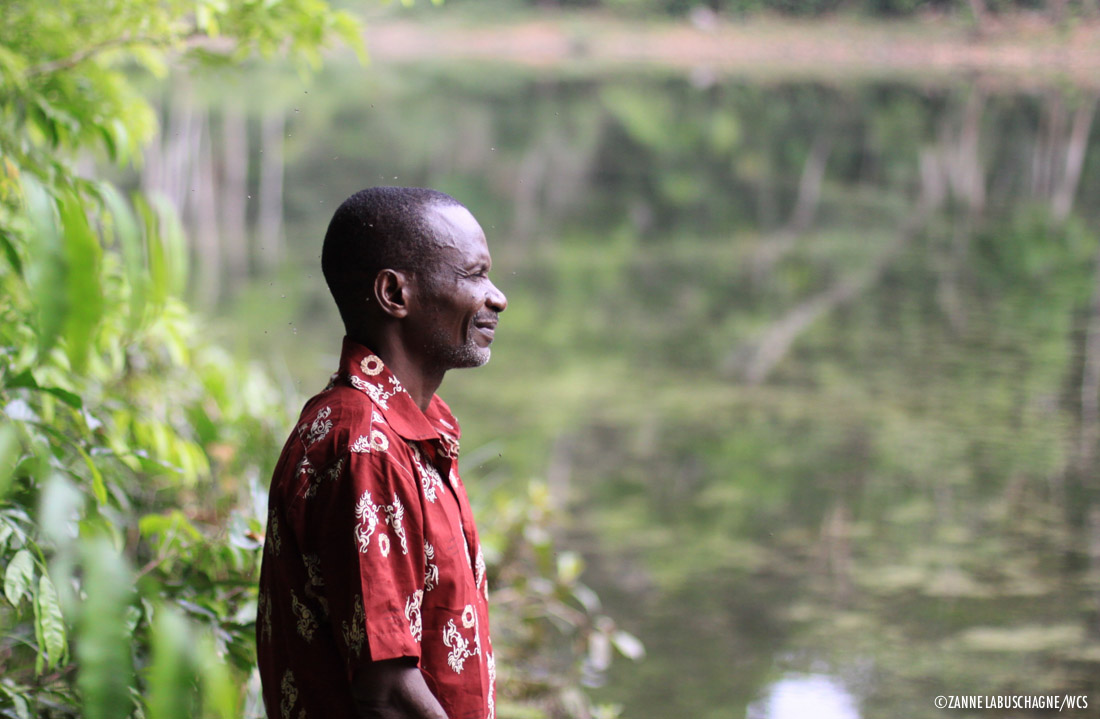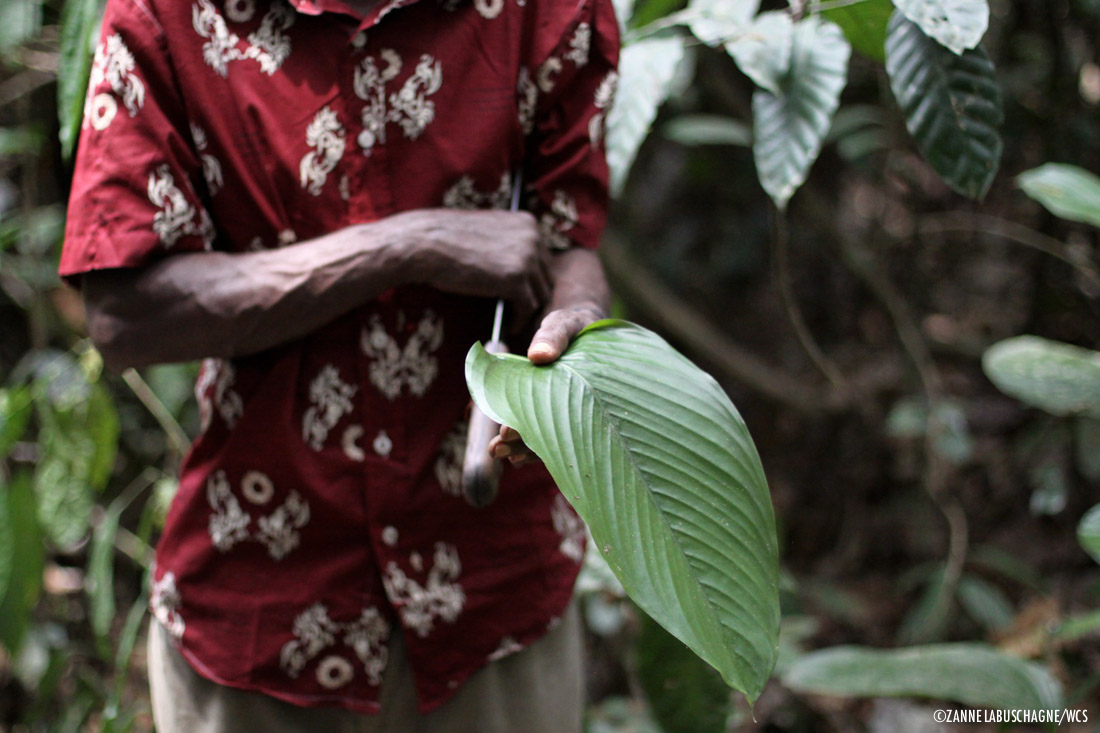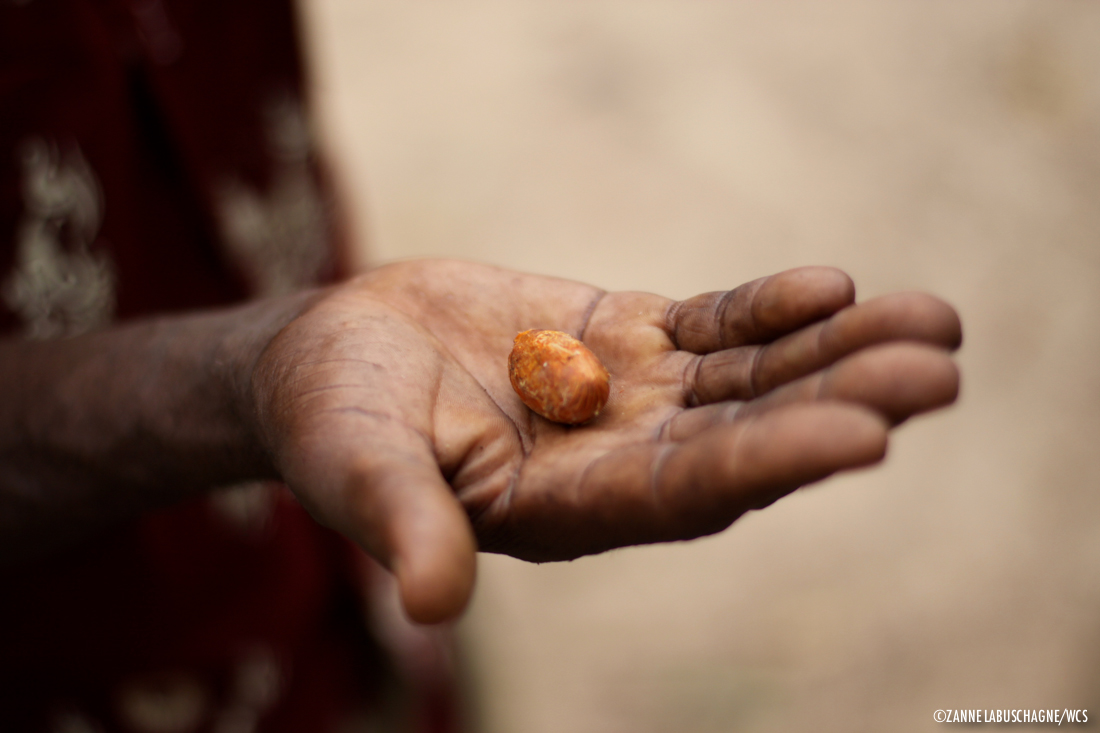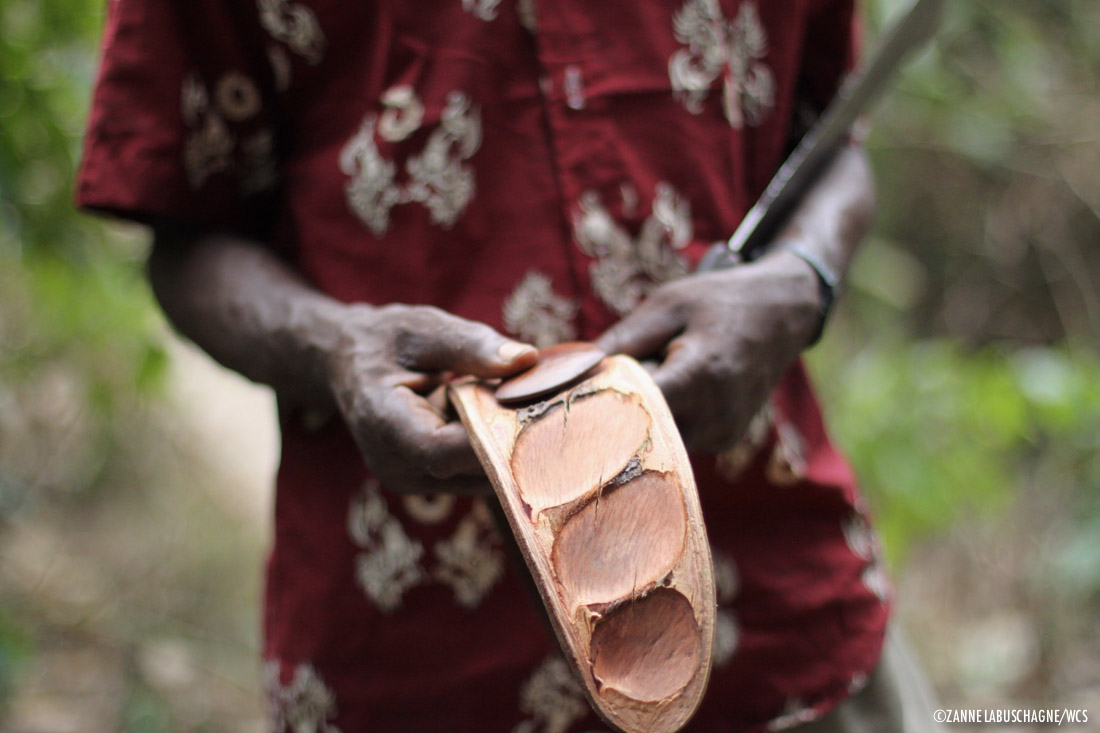
A walk to Wali
During a recent visit to Nouabale-Ndoki National Park I had the pleasure of taking a walk to Wali bai guided by Gabi Mobalambi. Gabi started working for WCS Congo in 1997. At the time he was an eco-guard posted as an assistant to researchers working at Wali bai. Eight years in the field working alongside several botanical experts, and a keen interest in the natural world, built a wealth of knowledge in Gabi. As a result in 2005 his role within WCS changed to that of a tourist guide. He worked for several years taking tourists to all of WCS’s tourism sites in Nouabale-Ndoki National Park.

Gabi recently came out of retirement to once again act as a guide for tourists, mostly for groups visiting Wali bai, and soon afterwards was elected as head of Bomassa village. Bomassa village is located next to the Nouabale-Ndoki National Park headquarters and is an important settlement for conservation in the region. Many WCS employees are based in the village and a percentage of revenue gained from tourism in the park is invested directly into a village development fund. With his love for the natural world and the respect of the community Gabi looks to play a key conservation role as a leader in Bomassa and by sharing his knowledge and experience with tourists visiting the park.

As we walked though the forest Gabi pointed out massive trees in the deadly embrace of strangler figs, green construction materials and a leaf used as cologne by teenagers in the village. Along the 3-kilometer walk to the bai Gabi paused every few hundred metres citing the scientific names of plants alongside the trail, followed by a myriad of uses for each species and which groups of indigenous people use them and for what. When asked whether he has a specific interest in the field he said that he is ‘just interested in the conservation of all biodiversity in its intact form’.



Tim G
I was lucky enough to visit Bomassa in 2003 and was taken on a tour of Walli Bai by Gabi.
He was extremely informative in sharing his love for conservation and it is wonderful to see that he has come out of retirement.
Stephen Barth
I agree. In 2009 he guided our way to Mbeli Bai. Hello Gabi !! Best of luck !!